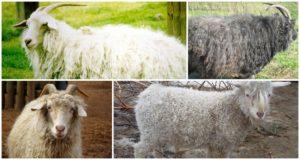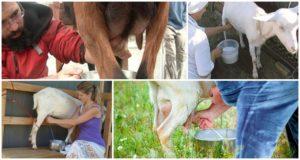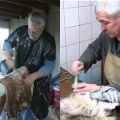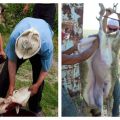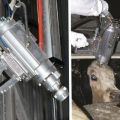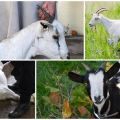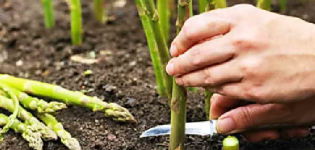How to make a goat skin correctly at home, step by step instructions
Growing animals with fur on a backyard poses a problem for the owners: what to do with the skin after slaughter? How to skin a goat at home? The processing of leather and fur raw materials takes time and patience. But, having the desire and theoretical knowledge on this issue, and a beginner can cope with this difficult task.
Characteristic features of skin products
Fur products from goat skins are light, warm, beautiful. The difference between goats and sheepskin lies in the structural features of the dermis. Mammalian skin consists of 3 layers:
- epidermis;
- dermis;
- subcutaneous fat.
The dermis is formed by collagen fibers and connective tissue and consists of 2 layers: papillary and reticular. The strength and elasticity of the skin depends on the condition of the dermis. In a goat skin, in contrast to a sheep skin, the papillary layer is denser, and the reticular layer is thicker. Collagen fibers of the papillary level form a dense network, which gives the dermis strength. Collagen bundles of the mesh layer are intertwined crosswise, which affects the elasticity of the hide.
Classification of goat skins
The weight of the steam room (freshly skinned) is about 6% of the weight of the animal. By thickness, paired skins are subdivided into IV subgroups (in millimeters):
- from 1.8 to 2.5 - an adult goat;
- from 2.2 to 3.5 - an adult goat;
- from 0.9 to 1.4 - kids at 2-3 months of age;
- from 1.3 to 2.2 - kids aged 5 to 6 months.
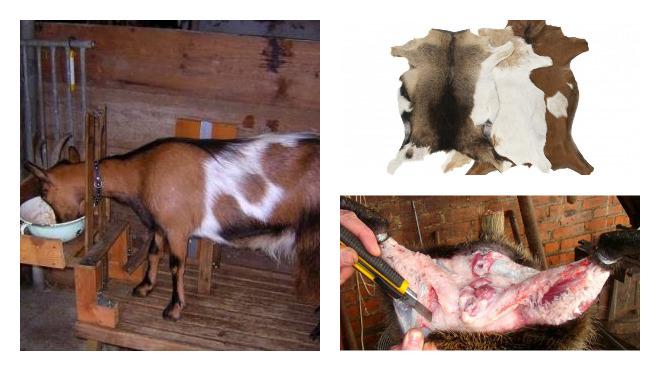
The quality of raw materials depends on the slaughter period, on the basis of which they are classified:
- Winter goat (November-January). Appointment - fur coats, fur products, footwear and haberdashery goods.
- Spring (February-June). Not used in leather and fur production due to numerous defects in the dermis, shedding period.
- Summer (June-July). Purpose - making chevro and linings for outerwear.
- Autumn (August-October). Purpose - production of high quality chevro and leather lining.
Depending on the breeds, goats are distinguished:
- grain (for example, the Russian breed);
- steppe (Orenburg);
- fur (near Don).
Kid skins up to 1800 square centimeters are divided into:
- moire-clam (at least 300 square centimeters) - from premature animals and miscarriages;
- from 400 square centimeters with a pile length of up to 4 / more than 4 centimeters.
According to the size and age of animals, the skins are classified:
- fur goat (up to 1.5 months);
- very small (up to 3 months);
- small and medium (3-6 and 6-10 months);
- large and especially large (young and adult animals).
According to the quality of the hairline, 4 varieties are distinguished.
How to skin
The carcass is suspended by the hind legs and 3 incisions are made:
- transverse from one hind hoof to the other through the anus;
- transverse from the metacarpal joint of one front hoof to the other through the sternum;
- longitudinal from the throat along the sternum and abdomen to the tail.
The skin is removed in one layer, from top to bottom. Tight fit of the skin to the carcass is trimmed with a knife. The fat and fat are cut off, leaving on the meat.

Required tools
Dressing tools:
- skinning knives;
- metal scraper;
- a spoon for removing fat;
- clamps;
- hammers (wood and metal);
- metal comb;
- brushes.
In addition, you will need devices for stretching and cleaning the goat (blanks, hangers, frames).
Dressing rules
At home, subject to technological requirements, a high-quality fur semi-finished product is obtained, suitable for further use.

Primary conservation
The removed skin is cooled by placing its skin upside down for 30 minutes. Preparation for preservation begins with the removal of meat and fat residues. Then the goat is covered with salt (1.5-2 kilograms), folded in an envelope and left in a cool room for 3 days so that the salt absorbs moisture from the flesh. The salt is then scraped off and the skin is pulled over the frame for drying. Thin skins of kids are dried without salt (fresh-dry method). Dry the skins in a dry, warm, ventilated room for 2 weeks.
Otmoka
Hard and dry skins for dressing must be softened, which requires soaking. 1 skin requires at least 10 liters of water. To speed up soaking, to prevent decay and grease (excess moisture in the flesh), you need:
- water temperature 25-30 degrees;
- washing powder (2 grams per 1 liter);
- antiseptic (1 gram per 1 liter);
- edible salt (30/50 grams per 1 liter);
- mixing.
For overdried skins, vinegar essence is added to the solution at the rate of 2 grams per 1 liter. Duration of soaking ranges from 20 to 48 hours, depending on the condition of the goat after drying.

Soaked goats should be degreased before proceeding with the next operation. To do this, dissolve washing powder, salt, gasoline in water at a temperature of 40 degrees (if the skin is very fat).
Quantitative composition per 10 liters of water at a temperature of 40 degrees:
- washing powder - 200 grams;
- salt - 300 grams;
- gasoline - 1 gram.
The skins are kept in solution for 24 hours at constant temperature and stirring. Then the goats are washed in clean water for 30 minutes, hung to drain the water and proceed to the next stage of dressing.
Fainting
The soaked and fat-free skin is cleaned of films. The goat is laid out on a deck / bracket and, carefully, so as not to break through the skin, the remains of fat and tendons are scraped off. The flesh is leveled in thickness by cutting the thickenings with a sharp knife. Remunerated goats are washed in soapy water (2 grams of detergent per 1 liter) at a temperature of 35 degrees. Then rinse for half an hour in warm water.
Picking
At the pickling stage, collagen fibers are processed. The acid-salt effect dissolves the proteins that bind them, increasing the porosity of the dermis. The pickel contains (for 10 liters of water):
- salt - 500 grams;
- acetic acid 70% - 250 milliliters;
- 100 milliliters of liquid soap;
- 300 milliliters of gasoline.
The temperature of the aqueous solution is 40 degrees. The skins placed in the pickle are periodically mixed and kept for 2 to 3 days. The end of pickling is checked by drying or pinching.In the first case, in the groin area, the skin is rolled up with a cross and carried along the fold with a fingernail. A white trace remains on the straightened dermis, which disappears after a while. A pinch is a test of the strength of the pile.
If it easily separates from the flesh, then the skin can be removed from the pickel.
Crawl
The wrung out goats are placed in a container with the fur outside, covered with burlap, and oppression is set. In this state, the ripening process takes place in the flesh within 2 days. The temperature in the room at which the lying down occurs is not lower than 18 degrees.
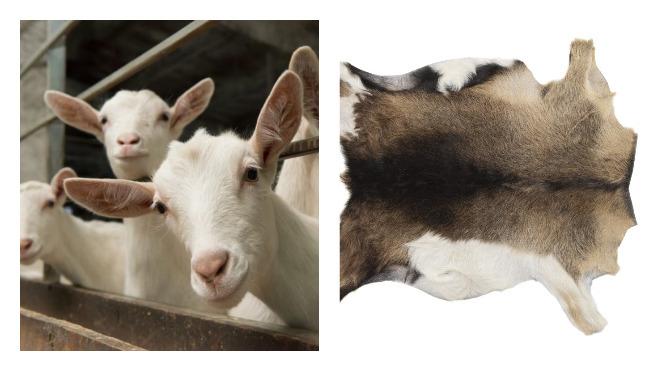
Tanning
After pickling, the flesh becomes soft and elastic, but exposed to moisture and temperature. Tanning treatment creates a protective film on collagen fibers.
For tanning goats, chemical or natural tanning agents are used:
- chromopik (potassium dichromate) + sulfuric acid;
- chromium sulfate with a basicity of 42;
- willow / oak bark;
- horse sorrel.
In 10 liters of water at a temperature of 40 degrees, half of the prepared chrome tanning agent is dissolved (90 grams of chromium sulfate is poured with 900 milliliters of boiling water, stirred and divided into 2 parts). Place the skin in the tanning agent, stirring once an hour for 10 minutes. After 5-6 hours add the 2nd part of the tanning agent.
The whole tanning process lasts from 20 to 24 hours. At the end, neutralization is carried out. To do this, dissolve 250 grams of baking soda in hot water, divide into 2 servings. The first is poured in 4 hours, the second - 2 hours before the end of tanning. The tanned skins are wrung out, laid on a bed for 12 hours.

Fattening
To prevent the tanning agent from being washed out of the flesh, the skins are covered with a layer of fat emulsion. At home, it can be prepared from equal parts of yolk and glycerin. The skins are stretched on a frame, coated with a brush and left to dry in a place protected from the sun. As it dries, the goats are crumpled and stretched to keep them soft and elastic.
Stripping
The last stage of dressing is cleaning the flesh with sandpaper. Then it is treated with chalk / tooth powder. The fur is combed with brushes and a comb.



